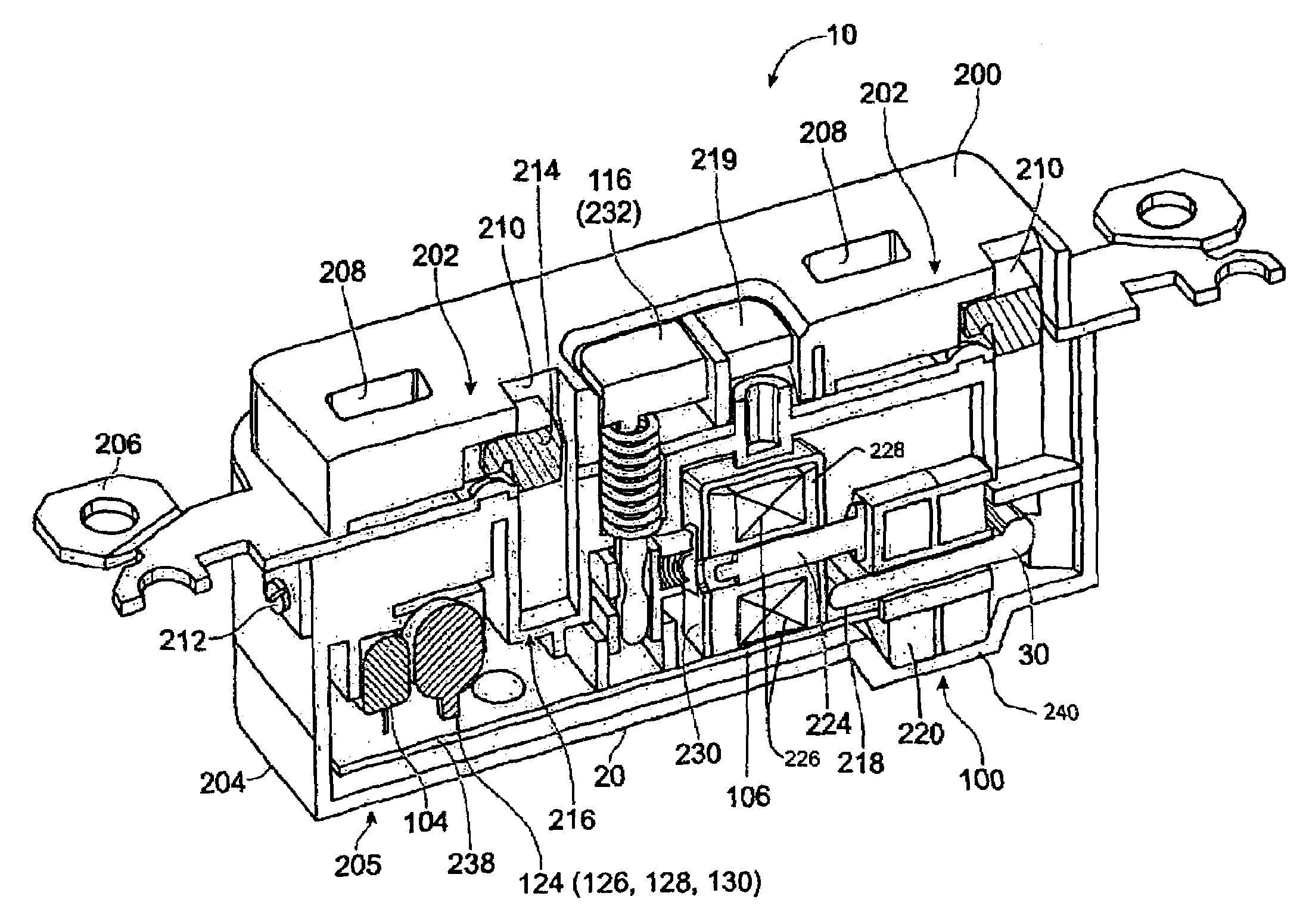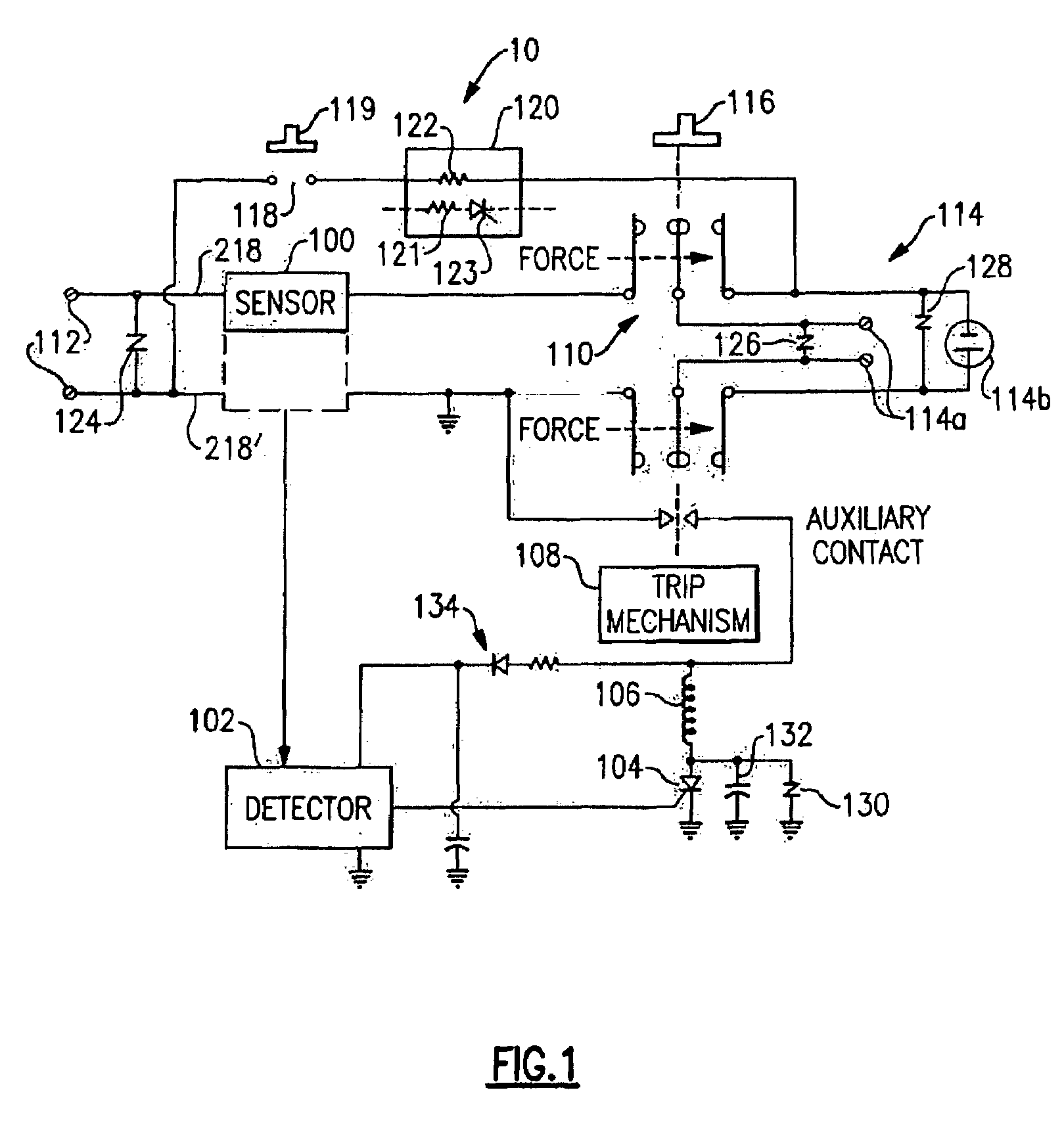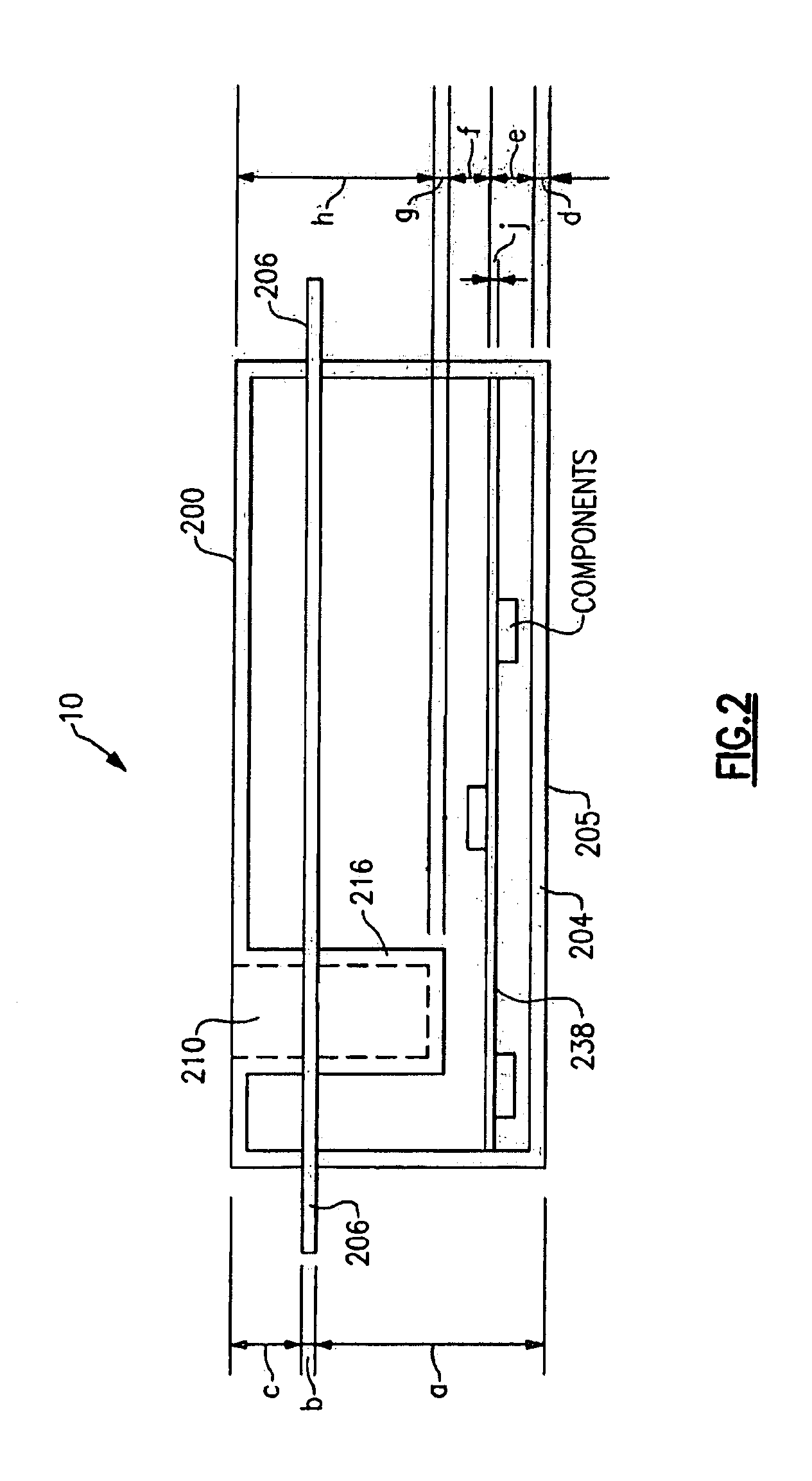Protective device having a thin construction
a protection device and thin construction technology, applied in emergency protection arrangements for limiting excess voltage/current, circuit-breaking switches, relays, etc., can solve problems such as affecting the safety of users, and limiting the interior volume of the outlet box
- Summary
- Abstract
- Description
- Claims
- Application Information
AI Technical Summary
Problems solved by technology
Method used
Image
Examples
Embodiment Construction
[0043]Reference will now be made in detail to the present exemplary embodiments of the invention, examples of which are illustrated in the accompanying drawings. Wherever possible, the same reference numbers will be used throughout the drawings to refer to the same or like parts. An exemplary embodiment of the protective wiring device of the present invention is shown in FIG. 1, and is designated generally throughout by reference numeral 10.
[0044]As embodied herein, and depicted in FIG. 1, a circuit diagram of a thin electrical wiring device 10 in accordance with a first embodiment of the present invention is disclosed. Before providing a detailed description of each component, it is noted that device 10 is comprised generally of a conductive path (between the line and the load), a fault response function, and a test capability.
[0045]With regard to the conductive path between the line terminals 112 and the load terminals 114, device 10 is properly connected to an AC power source by ...
PUM
 Login to View More
Login to View More Abstract
Description
Claims
Application Information
 Login to View More
Login to View More - R&D
- Intellectual Property
- Life Sciences
- Materials
- Tech Scout
- Unparalleled Data Quality
- Higher Quality Content
- 60% Fewer Hallucinations
Browse by: Latest US Patents, China's latest patents, Technical Efficacy Thesaurus, Application Domain, Technology Topic, Popular Technical Reports.
© 2025 PatSnap. All rights reserved.Legal|Privacy policy|Modern Slavery Act Transparency Statement|Sitemap|About US| Contact US: help@patsnap.com



